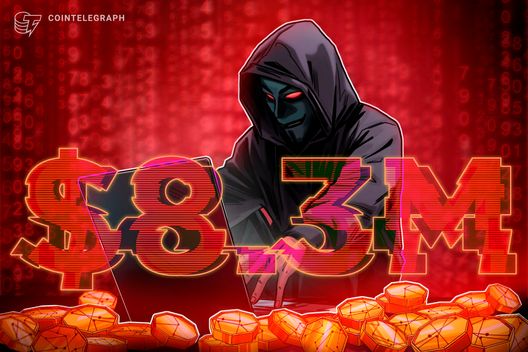
In an interview with Tony Edwards on the Thinking Crypto podcast, Bo Hines, Executive Director of the Presidential Council of Advisers for Digital Assets under President Donald Trump, laid out a detailed vision for US digital asset policy—warning that the global race for Bitcoin accumulation has already started and that the United States must act decisively if it hopes to remain the dominant force in the emerging financial order.
Bo Hines Outlines White House Bitcoin Vision
“The mining difficulty is going to increase around Bitcoin,” Hines stated, noting both the finite supply and the rising international competition for acquisition. “There is just a strategic long-term interest in accumulating as much as we can and doing it quickly before it becomes more expensive.” Hines was direct when asked how much Bitcoin the United States should hold. “That’s like asking how much gold do we want. We want as much as we can get,” he reiterated previous interviews, emphasizing that the objective is to acquire it in “budget neutral ways that don’t cost the taxpayer a dime.”
Under the Trump administration’s executive order on March 6, the Strategic Bitcoin Reserve (SBR) and the broader Digital Assets National Stockpile (DANS) were established. These initiatives, according to Hines, are not only symbolic but operationally significant. The SBR is designed to accumulate Bitcoin as a long-term sovereign asset, while DANS will give Treasury the flexibility to engage with other digital assets. “We view Bitcoin as digital gold,” he said. “It has the immaculate conception, as David [Sacks] likes to say, meaning there is no issuer and that’s intrinsic stored value.”
The Council, under the leadership of Hines and venture capitalist David Sacks, has positioned itself as a key interagency bridge between the White House, Capitol Hill, and industry stakeholders. Hines characterized the Biden-era digital asset policies as “lawfare” and regulatory obstructionism that forced innovators offshore. Now, he said, “our message to the folks that have gone offshore is: welcome home.” He cited the administration’s objective to make the US “the most crypto-friendly country in the world” as a driving force for legislative and regulatory acceleration.
That acceleration is already visible. “It would be a derelict of duty if we don’t get both market structure and stablecoin legislation on the President’s desk before the August recess,” Hines declared, referring to two major bills currently advancing in Congress. He praised the bipartisan momentum, highlighting the Senate Banking Committee’s 18–6 vote in favor of the GeniUS Act and ongoing House markups for its stablecoin counterpart. “This is the first time the chambers had come together and said, we’re going to make sure that we pass meaningful legislation,” he said, calling the bicameral working group on digital assets a “monumental step.”
The interview also revealed the White House’s confidence in industry expertise and the necessity of integrating traditional finance with digital asset infrastructure. “Industry does know best,” Hines said. “They live, breathe, and sleep this every day.” He confirmed that the Council has been in close contact with both TradFi incumbents and crypto-native startups, aiming to “build the bridge” between them. Hines hinted that this would become a key phase of policy once the legislative groundwork is laid and Operation Choke Point 2.0—referring to alleged debanking of crypto firms—is fully dismantled.
Hines also spoke candidly about stablecoins as a geopolitical lever. “Actors in other countries or citizens of other nations still want US dollars,” he said. Stablecoins, he argued, are essential tools to preserve dollar hegemony in a world where BRICS nations and adversarial powers are exploring dollar alternatives. He underscored the need for legislative clarity to ensure US-backed stablecoins serve this global demand.
When asked about government Bitcoin mining operations, Hines did not rule them out, but was careful to bracket such possibilities within the administration’s fiscal principles. “If it can fall under the framework of budget neutral, then I think all possibilities are on the table,” he said, though he emphasized that no such plans are currently being pursued.
The concept of blockchain being used in public sector applications—including government spending and voting—was also discussed. Hines acknowledged growing internal conversations about integrating blockchain for transparency purposes, aligning with comments from Elon Musk and other technologists. “I can think of many use cases… in which we could actually lift the veil on what’s happening with taxpayer money,” he said. “It’s something that can be implemented pretty quickly.”
Despite the urgency conveyed throughout the interview, Hines remained optimistic about the current alignment of institutional forces. “We have a President that’s finally working to accumulate assets for the American people rather than take assets away from them,” he said, crediting the administration’s early digital asset executive orders for mobilizing agencies to produce actionable frameworks. “We’re compiling recommendations and building a comprehensive report for the President about how we actually achieve the goals we’ve set out.”
As for whether the administration sees this technological transition as equivalent to past industrial revolutions, Hines didn’t hesitate. “We certainly do in our office, and the President certainly does,” he said. Drawing a parallel to the Internet boom, he noted that while consumers haven’t yet felt the full impact of blockchain technology in their daily lives, “that day is coming very soon.”
In short, the message from the White House is clear: The Bitcoin era is no longer a theoretical future—it is a competitive present. And in the words of Bo Hines, “We have a very unique opportunity in time… we need to capitalize on it and move very quickly.”
At press time, BTC traded at $84,587.

Featured image from YouTube, chart from TradingView.com

Editorial Process for bitcoinist is centered on delivering thoroughly researched, accurate, and unbiased content. We uphold strict sourcing standards, and each page undergoes diligent review by our team of top technology experts and seasoned editors. This process ensures the integrity, relevance, and value of our content for our readers.



